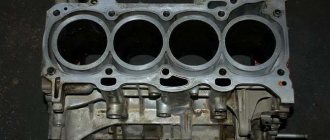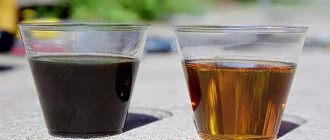Toyota Land Cruiser Prado 4 (J150) is a Japanese mid-size SUV, representing the fourth generation of the Land Cruiser Prado family. Positioned as an affordable alternative to the older Land Cruiser model. The J150 body model has been on the assembly line since 2009. In 2013, production was launched in Vladivostok, Russia, but assembly was stopped in 2015. In 2013. the car was updated, and in 2013 a relatively new 2.8-liter turbodiesel appeared. The next modernization of the Land Cruiser Prado took place in 2021. A Japanese-assembled car is available in Russia at a minimum price of 2 million 412 thousand rubles. The SUV is equipped with a 163-horsepower 2.7-liter gasoline engine coupled with a manual transmission. The initial “Classic” configuration includes airbags (7 pcs.), ESP stabilization, air conditioning, and a light sensor. The “Standard” version is complemented by climate control, an audio system, foglights, and alloy wheels. For this car they are asking 2 million 709 thousand rubles. With cruise control, the car costs 2 million 811 thousand rubles.
The current minimum cost of a Toyota Land Cruiser Prado with a 2.8-liter 177-horsepower diesel engine is 3 million 138 thousand rubles. The list of “basic” equipment for a car with this engine includes keyless entry, an alarm system, and assistance when descending or ascending. The “Elegance” version with the same engine is complemented by rear wheel differential locks, an internal combustion engine pre-heater, a rain sensor, heated central glass, LED headlights and a heated steering wheel. Such a car costs 3 million 453 thousand rubles. The starting price for an SUV with a flagship 4.0 liter engine (six cylinders, 249 hp) is 3 million 496 thousand rubles. This version has an automatic transmission, and the seven-seat version costs 4 million 285 thousand rubles.
Amount of oil to be filled by generation and engine model
The Japanese manufacturer used several types of power units on the Prado 120 and 150, designed for different markets. The units are designed to run on gasoline, but there were also diesel SUVs.
The crankcase capacity indicated in the factory documentation provides for complete drainage of waste, which is unattainable during maintenance. About 300 to 500 ml of old material remains in the engine, which should be taken into account when replacing.
Model range 2002-2009
The following units were used on Prado Land Cruisers with a J120 body:
- petrol 249-horsepower 1GR-FE with a volume of 4.0 liters (the only version officially sold in Russia);
- 2.7-liter 2TR-FE with 163 hp. With. with spark ignition;
- petrol 3.4-liter 5VZ-FE with a power of 185 hp. With.;
- diesel 1KD-FTV with a volume of 3 liters, developing 173 hp. With.
The crankcase capacity on the 1GR-FE is 5.7 liters (excluding filter). The 2TR-FE unit has an oil system capacity of 5.9 liters, and the 5VZ-FE will require 5.3 liters of lubricant. The diesel engine equipped with a supercharging system has the largest capacity. To fully fill the 1KD-FTV, 7.4 liters of engine oil is required.
The Prado with a J120 body uses a petrol engine.
Model range 2009-2013
The appearance of the new J150 body did not greatly affect the range of power units:
- the basic version was equipped with a petrol 2TR-FE with a capacity of 163 hp. With.;
- on expensive modifications, a 249-horsepower 4.0-liter 1GR-FE was used;
- for the European market, a 1KD-FTV diesel engine with a volume of 3 liters and a power of 173 hp was offered. With.
Model range 2013-2015 (restyling)
In 2013, the Japanese manufacturer modernized the model; the front part of the body, lighting equipment and interior were modified. The range of power plants included a 177-horsepower 1GD-FTV diesel engine, and the power of the 1KD-FTV was increased to 190 hp. With. At the same time, gasoline units disappeared from the production range for Russia (2TR-FE remained for the Middle East). The filling volume of the 1GD-FTV lubrication system is 7.5 liters including the filter housing and 7 liters without the cartridge.
The power of the Prado 150 was increased to 190 hp. With.
Model range 2015
After 2015, versions of the SUV were sold on the Russian market with diesel units 1GD-FTV and 1KD-FTV, which retained the power at the same level. But 2 years later another restyling was carried out, which led to a change in the range of engines. Under the hood, the 163-horsepower 2TR-FE reappeared, and the 1GD-FTV version with a capacity of 200 hp began to be used. With. and the 249-horsepower 1GR-FE was returned to the lineup. The amount of lubrication and the design of the oil system remain unchanged.
Table with the dependence of the engine and the amount of oil in it
Engine oil for Toyota Land Cruiser Prado 120 (2002 – 2009)
| Modification | Engine model | Filling volume (including filter/without filter), l | Engine oil | Applicability of oils depending on temperature |
| Prado 150 2.7 163 hp | 2TR-FE petrol | 5.8/5.1 | SAE viscosity grade: 5w-30, 10w-30 Standards: API quality class: SN (“Resource Conserving”) SAE viscosity grade: 15w-40, 20w-50 Standards: | |
| Prado 150 3.0 TD 173 hp | 1KD-FTV diesel | 7.0/6.7 | SAE viscosity grade: 5w-30, 10w-30, 15w-40, 20w-50 Standards: Quality grade: G-DLD-1, ACEA B1, API CF-4 or CF | |
| Prado 150 4.0 249 hp | 1GR-FE petrol | 5.2/4.9 | Viscosity grade according to SAE: 5w-30, 10w-30 Standards: Quality grade according to API: SJ, SL, SM (“Energy Conserving”) SN (“Resource Conserving”) |
Which oil to choose
When selecting the type of motor oil, the manufacturer's requirements should be taken into account. It is allowed to use both original fluids and materials from third-party suppliers. It is prohibited to fill engines with lubricants that do not meet Toyota standards. The use of materials of inadequate quality leads to accelerated wear of parts and the formation of carbon deposits, which limit the mobility of the piston rings, impair the tightness of the valves and clog the channels of the oil system.
Original stamps
The manufacturer offers materials in original packaging with Toyota markings. Lubricant for gasoline engines assembled after 2016 must comply with API SN/SP and have a viscosity of 10W-30, 5W-30, 5W-20 or 0W-20, depending on external climatic conditions. It is recommended to use synthetic-based materials, but the design of the piston group of gasoline units can also withstand semi-synthetic oils with API class no lower than SL.
The manufacturer offers original Toyota oil.
The use of materials with API SN/SP allows to reduce fuel consumption. When determining viscosity, the compliance of units with toxicity standards should be taken into account. For engines up to Euro 4, it is better to use 5W-30 or 10W-30 oils (for all-season operation and southern regions, respectively). After the introduction of Euro 5 standards, the plant switched to using oil with a viscosity of 0W-20. Grade 10W-30 is only suitable for regions with a minimum air temperature of at least -18°C.
For the 1GD-FTV diesel engine, Toyota Genuine Motor Oil is recommended, meeting API CF-4 or ACEA standards not lower than B3. For all-season operation, a material with a viscosity of 5W-30 is suitable; in the southern regions of the Russian Federation, the use of lubricant of the 10W-30 standard is allowed (at an ambient temperature not lower than -18°C). If the engine meets Euro 5 emission standards and higher, then ACEA C5 oils with a viscosity of 0W-20 (preferred option) or ACEA C2 with a viscosity of 0W-30 or 5W-30 should be used.
Non-original oil
When servicing engines on the Prado 150, you can use the following oils:
- Mobil-1 ESP Formula 5W-30, available in 1L or 4L cans.
- Mobil Delvac 1 LE 5W-30, designed for diesel engines and shipped to customers in 1 or 5 liter containers.
- Motul 8100 X-lite 0W-30, characterized by increased fluidity at low temperatures.
- Liqui Moly Top Tec 4200 5W-30.
- Shell Helix Ultra ECT C2/C3 0W-30, Helix Ultra ECT 5W-30 or HX-8 Synthetic 5W-30.
- Total Quartz INEO Long Life 5W-30, Rubia TIR 9900 FE 5W-30.
When servicing engines, you can use Mobil-1 ESP.
All of the listed oils meet the requirements of the Toyota concern and are able to protect the engine from premature wear under any load.
It is recommended to purchase materials from large retail outlets. Many manufacturers provide protection against counterfeiting of products (for example, Shell uses labels with a number for verification through the manufacturer’s website).
Toyota Prado 120 2002-2009
Model 2001 release.
Gasoline engines
According to the car's operating instructions, the recommended engine oil for Toyota Prado must meet the following parameters:
- original Toyota Genuine Motor Oil or equivalent lubricants that meet the vehicle manufacturer's lubricant quality requirements:
- universal motor fluids of class SL or SJ with the inscription “Energy Conserving” (energy saving) according to API standards;
- ILSAC certified motor lubricants.
The viscosity of the motor oil is selected according to scheme 5.
Diagram 5. Recommended viscosity for Toyota Prado gasoline engines.
According to diagram 5, if you fill in motor fluids 10w-30, 15w-40, 20w-50 at very low temperatures, then starting the engine will be difficult. For temperatures below +80C it is recommended to pour 5w-30.
Diesel power units
According to the manual, for diesel engines it is necessary to use motor oils with the following parameters:
- liquids corresponding to class G-DLD-1;
- oil classes CF-4 or CF according to API classification (it is acceptable to use CE or CD).
To select viscosity, use diagram 5.
Refueling volumes
The oil volume between the maximum and minimum marks on the Toyota Prado dipstick is:
- 1.3 l if engines are 2TR-FE
- 1.5 liters in the case of 1GR-FE or 5L-E engines;
- 1.2 l for 1KZ-TE engines.
Oil change frequency
The frequency of maintenance is determined by operating conditions. The manufacturer requires changing the oil and filter annually or every 10 thousand kilometers. In case of operation in harsh conditions, it is recommended to reduce the interval to 7.5-8 thousand km. If traces of antifreeze are found in the crankcase or a large amount of water gets in, it is necessary to carry out an emergency replacement while simultaneously eliminating the causes of coolant penetration into the lubrication system.
For the 1GD-FTV diesel unit operating in difficult conditions, the service interval is set at 6 months or 5 thousand km. Severe conditions mean working with a trailer, driving in the mountains at an altitude of 2000 m or more, or frequent trips in winter over a distance of up to 8 km, which do not allow the cooling jacket and crankcase to warm up. When the vehicle is operated on roads with heavy dust, the oil life in the diesel engine is reduced to 2.5 thousand km or 3 months.
An alternative method for determining when to change the oil is based on calculating engine hours. The service life of the synthetic material is about 250 hours; at an average speed of 30 km/h, maintenance will be required after 7.5 thousand km. Prado 150 vehicles with a 1GD-FTV diesel unit are equipped with a sensor that analyzes the quality of the engine oil and automatically notifies the driver of the need for maintenance.
The frequency of oil changes is determined by operating conditions.
Engine oil for Toyota Land Cruiser Prado 150 (restyling 2013 – 2015)
| Modification | Engine model | Filling volume (including filter/without filter), l | Engine oil | Applicability of oils depending on temperature |
| Prado 150 2.7 163 hp | 2TR-FE petrol | 5.7/5.0 | SAE viscosity grade: 0w-20, 5w-20, 5w-30, 10w-30 Standards: API quality class: SL, SM (“Energy Conserving”) SN (“Resource Conserving”) SAE viscosity grade: 15w-40, 20w-50 Standards: API quality class: SL, SM or SN | |
| Prado 150 3.0 TD 173 hp | 1KD-FTV diesel | 7.0/6.7 | For models with DPF: SAE viscosity grade: 0w-30, 5w-30 Quality grade: ACEA C2 | |
| For models without DPF: SAE viscosity grade: 5w-30, 10w-30, 15w-40, 20w-50 Quality grade: ACEA B1, API CF-4 or CF | ||||
| Prado 150 4.0 282 hp Model code: GRJ150L-GKAEKW | 1GR-FE petrol | 6.2/5.7 | SAE viscosity grade: 0w-20, 5w-20, 5w-30, 10w-30 Standards: API quality class: SL, SM (“Energy Conserving”) SN (“Resource Conserving”) SAE viscosity grade: 15w-40, 20w-50 Standards: API quality class: SL, SM or SN |
Determining oil quality
To quickly determine the degree of degradation of the lubricant, the drop test method is used. It is necessary to apply a few drops of the material at an angle of 30° to 45° onto a sheet of clean paper. The base will be absorbed in 10-15 minutes, and impurities will spread over the surface. Before carrying out the test, it is necessary to warm up the power unit to operating temperature. To take a sample, use an oil dipstick located on the crankcase of the power unit.
Particles of soot and metal dust accumulate in the center of the spot; as the oil degrades, the area becomes darker. A halo forms around the central part from the lubricant absorbed into the paper, which allows you to determine the condition of the liquid.
As the material ages, the material becomes darker, and degradation occurs faster on diesel engines.
There is a zone around the halo that allows you to determine the presence of water in the crankcase. In the absence of impurities, the boundary of the third zone is smooth; when condensate enters the oil, the edge becomes torn. The appearance of a yellow ring around the perimeter indicates a coolant leak into the crankcase. If the lubricant degrades excessively, the third zone of the stain becomes dark. Additionally, you can burn a sheet of paper with a test spot. When the material cracks during oxidation, it indicates the presence of water.
The outer part of the spot allows you to determine the fuel concentration. On working units the loop is minimal or absent. The appearance of a wide strip indicates a malfunction of the injectors or wear of the piston group.
The dipstick is used to take an oil sample.
Checking with a sheet of paper is conditional and does not allow one to draw clear conclusions about the condition of the engine or the degree of oil degradation.
Oil change instructions
Algorithm for servicing a 4-liter 1GR-FE engine on a Toyota Prado 150 SUV, produced in 2009:
- Prepare fresh oil in the required volume, metal sealing rings, a filter and a set of plumbing tools. To collect the waste you will need an old canister, rubber gloves and safety glasses may also come in handy.
- Warm up the power unit to operating temperature and drive the car onto a horizontal platform with an inspection hole or onto a lift. Skewing of the body is not allowed, since the conditions for normal drainage of waste are violated.
- Unscrew the 2 bolts holding the plug to the standard protection. On machines equipped with screens from alternative manufacturers, you will need to remove the carbon fiber or steel sheet. Since during maintenance it is necessary to change the filter cartridge, and it is impossible to get to it with the protection installed, the screen should be removed regardless of the design.
- Open the hood and unscrew the plug installed in the channel for filling the crankcase with oil.
- Unscrew the drain plug with a wrench, completely unscrew the plug by hand and place a container to collect waste. The draining procedure depends on the condition of the oil and lasts from 15 to 30 minutes.
- Remove the plug from the filter housing and drain the remaining lubricant using the fitting included with the new cartridge.
- Unscrew the filter housing and replace the cartridge by installing the O-ring from the kit in accordance with the instructions supplied by the manufacturer of the spare part.
- Screw the plug into the drain channel, after installing a new seal.
- Insert a funnel into the filler neck and fill with fresh liquid. The oil volume in the 1GR-FE engine crankcase is 5.5 liters.
- Check the level and, if necessary, increase the amount of lubricant to normal.
- Close the plug and start the engine: the emergency pressure indicator should go out when the crankshaft is cranked with the starter or immediately after the power unit starts operating.
- Turn off the car, make sure there are no lubricant leaks, and then replace the protective screen.
Toyota Prado 150 from 2009
Model 2012 release.
The characteristics of the recommended engine oil for Toyota Land Cruiser Prado depend on the engine type.
Gasoline car engines 1GR-FE (models GRJ150L-GKTEKW and GRJ150L-GKTEK)
The Toyota Prado manual specifies the following requirements for lubricants:
- Toyota Genuine Motor Oil branded lubricants or parameters equivalent to them;
- class of motor fluids SL or SM with the inscription “Energy Conserving” (energy-saving) or SN with the designation “Resource-Conserving” (resource-saving) according to API standards;
- fluids that meet ILSAC requirements and have a viscosity of 15w-40.
You can select the viscosity of the motor oil for the GRJ150L-GKTEKW model according to scheme 6, and for the GRJ150L-GKTEK model according to scheme 7.
Diagram 6. Recommended engine fluid viscosity for model GRJ150L-GKTEKW.
The manufacturer indicates in the car manual that it is preferable to fill in 0w-20 fluids; they are intended for a wide range of temperatures from -180C (or less) to +270C (or more). If 0w-20 motor oils are not available, then you can use 5w-30, but at the next replacement you need to fill in 0w-20. Liquids 10w-30, 15w-40 are poured at air temperatures above -180C, 15w-40 is better to pour in the summer.
Diagram 7. Recommended motor oil viscosity for the GRJ150L-GKTEK model.
According to scheme 7, at temperatures below +100C, 5w-30 is used. If the air temperature is above -180C, fill in 10w-30 or 15w-40.
Gasoline engines 2TR-FE
According to the Toyota Prado instructions, you need to use oils with the following characteristics:
- original Toyota Genuine Motor Oil lubricants or oils equivalent to them in terms of parameters;
- type of motor oil SL or SM marked “Energy Conserving” (energy-saving) or SN marked “Resource-Conserving” (resource-saving) according to API standards;
- motor oils that meet ILSAC requirements and have a viscosity of 15w-40.
To select the viscosity parameters of engine oil, use diagram 8.
Diagram 8. Recommended viscosity of motor oil and the temperature at which it is permissible to use it.
At extremely low temperatures, to ensure quick engine starting, it is recommended to use 0w-20, 5w-20, 5w-30. When the thermometer reading is above -180C, it is advisable to use 10w-30 or 15w-40.
Diesel car engines 1KD-FTV (model KDJ150L-GKFEYW and KDJ150L-GKAEYW)
According to the manual for the Toyota Land Cruiser Prado, the vehicle manufacturer recommends filling in oils with the following characteristics:
- original Toyota Genuine Motor Oil lubricants or oils equivalent to them in terms of parameters;
- CF-4 or CF according to API classification;
- B1 according to ACEA standards.
To select viscosity, use diagram 9.
Diagram 9. Recommended viscosity of motor oil depending on the temperature outside the car.
Based on diagram 9, at extremely low temperatures it is preferable to pour 5w-30, while 10w-30 or 15w-40 lubricants will not provide quick engine starting; they are used at temperatures above -180C
Diesel engines 1KD-FTV (model KDJ150L-GKAEY except those meeting EURO IV)
Recommended engine oil parameters for Toyota Prado:
- branded Toyota Genuine Motor Oil or alternative lubricants with appropriate characteristics;
- according to API classification of grease CF-4 or CF (it is acceptable to use CE or CD);
- according to the ACEA standard class B1.
The selection of lubricant viscosity is carried out using diagram 10.
Diagram 10. Recommended viscosity of motor oil and the temperature at which it is permissible to use it.
According to scheme 10, it is preferable to use 5w-30 motor oils at temperature conditions from -180C (and below) to +270C (and above), 10w-30, 15w-40 and 20w-50 are used at temperatures above -180C.
Diesel power units 1KD-FTV (model KDJ150L-GKAEY meeting EURO IV)
Recommended oil parameters for Toyota Prado:
- original Toyota Genuine Motor Oil lubricants or motor oils with similar characteristics;
- lubricants corresponding to CF-4 or CF according to the API system;
- B1 according to ACEA standards.
The viscosity of the lubricant is selected according to scheme 9.
Diesel engines 1GD-FTV
The recommended engine oil for Toyota Prado should have the following characteristics:
- original Toyota Genuine Motor Oil lubricants or motor oils with similar characteristics;
- ACEA class C2 only.
The selection of viscosity is carried out according to scheme 11.
Diagram 11. Recommended lubricant viscosity.
It is preferable to use 0w-30 oils; they ensure optimal consumption of the fuel mixture by the car, as well as quick engine starting in cold weather. In the absence of the specified lubricants, it is permissible to pour 5w-30.
Video
The algorithm for servicing other Prado 150 power plants does not differ from the procedure described above. Diesel engines use a filter with a standard metal housing. Flushing the crankcase is not required, since engine oils contain components that remove deposits during operation. Flushing is not required when switching to another type of lubricant, since the materials are compatible. The procedure is carried out when coolant gets into the crankcase or the service interval is violated.
On vehicles with a 1GD-FTV diesel engine, it is necessary to reset the service interval counter located in the memory of the instrument cluster. The procedure depends on the type of shield used; If the data is left unchanged, a notification will be displayed on the display indicating that maintenance is required. Other power units are not equipped with an oil change reminder system.











